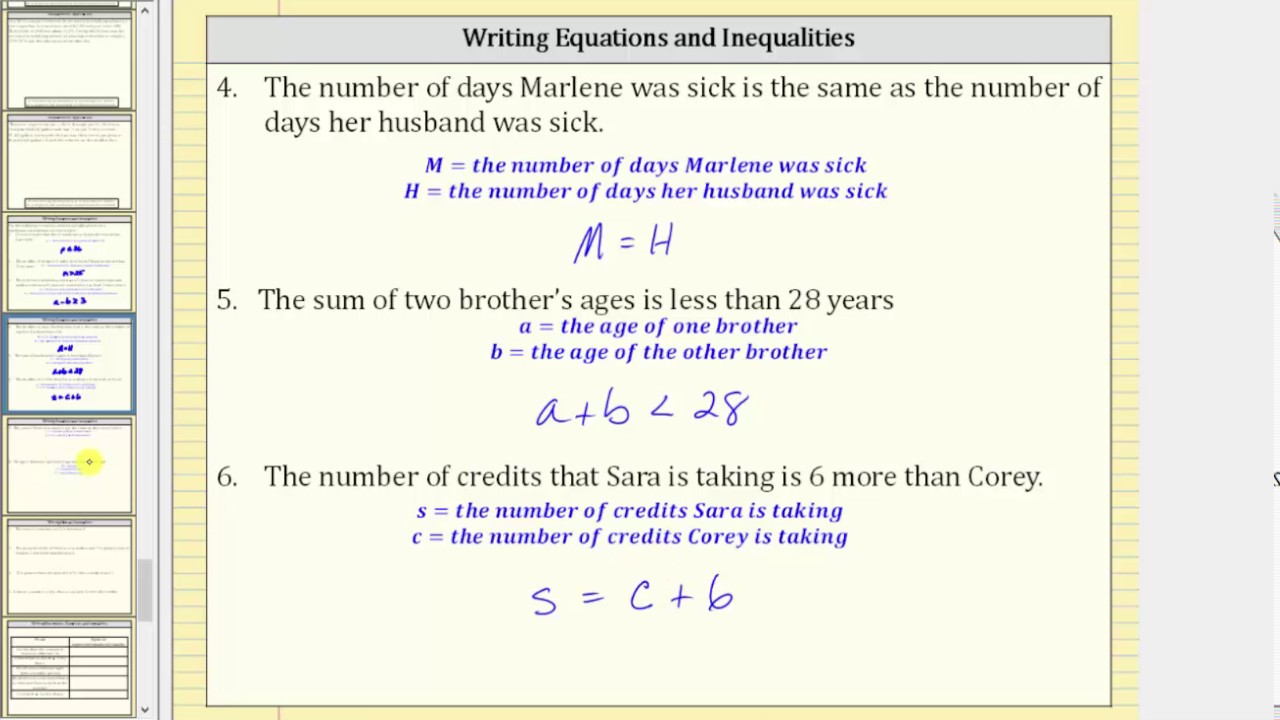Welcome to the world of Algebra 1, where how to formulate equations and inequalities serve as powerful tools for solving mathematical problems and real-world scenarios. As such, this comprehensive blog digs into the art of composing equations and inequalities, exploring their components, rules, and practical applications. So, by the end of this journey, you’ll have the skills to craft and solve algebraic equations and inequalities with confidence.
Therefore, Learnerscamp has come a long way to help students understand different mathematical concepts including How to Compos Expressions. Not excluding other maths topics such as area, perimeter, coefficients and How to calculate; Expressions, Variables, and Operations in Algebra among many other topics. Learnerscamp also enables you to learn maths at the comfort of your space, pace and time.
Understanding how to formulate Equations and Inequalities:
Equations and inequalities are mathematical statements that express relationships between quantities. Comparatively, while equations assert that two expressions are equal, inequalities indicate a comparison between two expressions, typically using symbols such as “<“, “>”, “<=”, “>=”, or “! =”. So, let’s explore these concepts further with practical examples:
Example 1: Equation:
- 2x + 3 = 9
- Here, the expression “2x + 3” is equal to 9. To solve for x, we isolate the variable by performing inverse operations:
2x + 3 – 3 = 9 – 3
2x = 6
x = 3 - Solution: x = 3
Example 2: Inequality:
- 4x – 5 < 11
- This inequality indicates that the expression “4x – 5” is less than 11. To solve for x, we isolate the variable similarly:
4x – 5 + 5 < 11 + 5
4x < 16
x < 4 - Solution: x < 4
Components of Equations and Inequalities:
- Variables: Symbols representing unknown or changing quantities in the equation or inequality.
- Constants: Fixed numerical values that do not change, such as coefficients or constants on one side of the equation.
- Operators: Mathematical symbols indicating operations such as addition, subtraction, multiplication, division, and exponentiation.
Rules for Composing Equations and Inequalities:
- Perform the same operation on both sides of the equation or inequality to maintain balance.
- Use inverse operations to isolate the variable.
- When dealing with inequalities, be mindful of the direction of the inequality symbol (<, >, <=, >=) when performing operations.
Practical Applications of Equations and Inequalities:
- Finance: Compose equations to calculate total expenses, profits, or savings based on income, expenses, and investments.
- Geometry: Formulate equations to find unknown dimensions, angles, or areas of geometric shapes such as rectangles, triangles, or circles.
- Physics: Model physical phenomena using equations to describe relationships between variables such as force, mass, acceleration, and energy.
Example 3: Equation representing the area of a rectangle:
- A = lw
- If the length (l) is 5 units and the width (w) is 3 units, the equation becomes: A = 5 * 3 = 15 square units.
Example 4: Inequality representing a budget constraint:
- 2x + 3y <= 100
- This inequality indicates that the total cost (2x + 3y) of purchasing x items priced at $2 each and y items priced at $3 each should not exceed $100.
Conclusion:
Conclusively, Equations and inequalities are indispensable tools in Algebra 1, enabling us to model and solve a wide range of mathematical problems and real-world scenarios. Hence, by understanding their components, rules, and practical applications, you’ve embarked on a journey of algebraic discovery. Thus, embrace the challenges, practice diligently, and let the power of equations and inequalities empower you to navigate the complexities of algebra with confidence.









